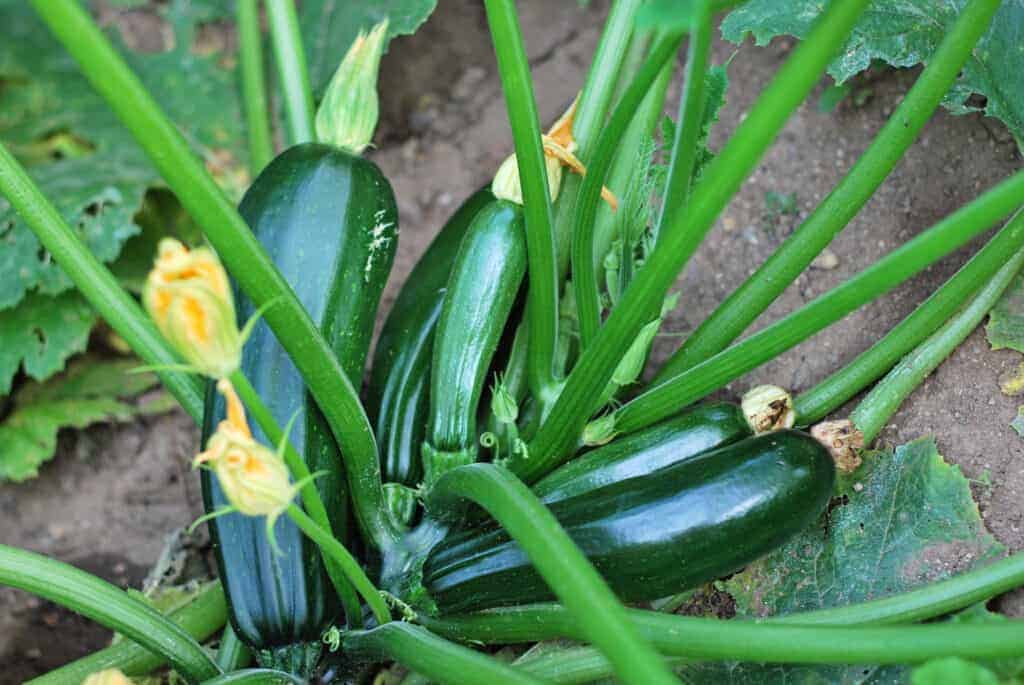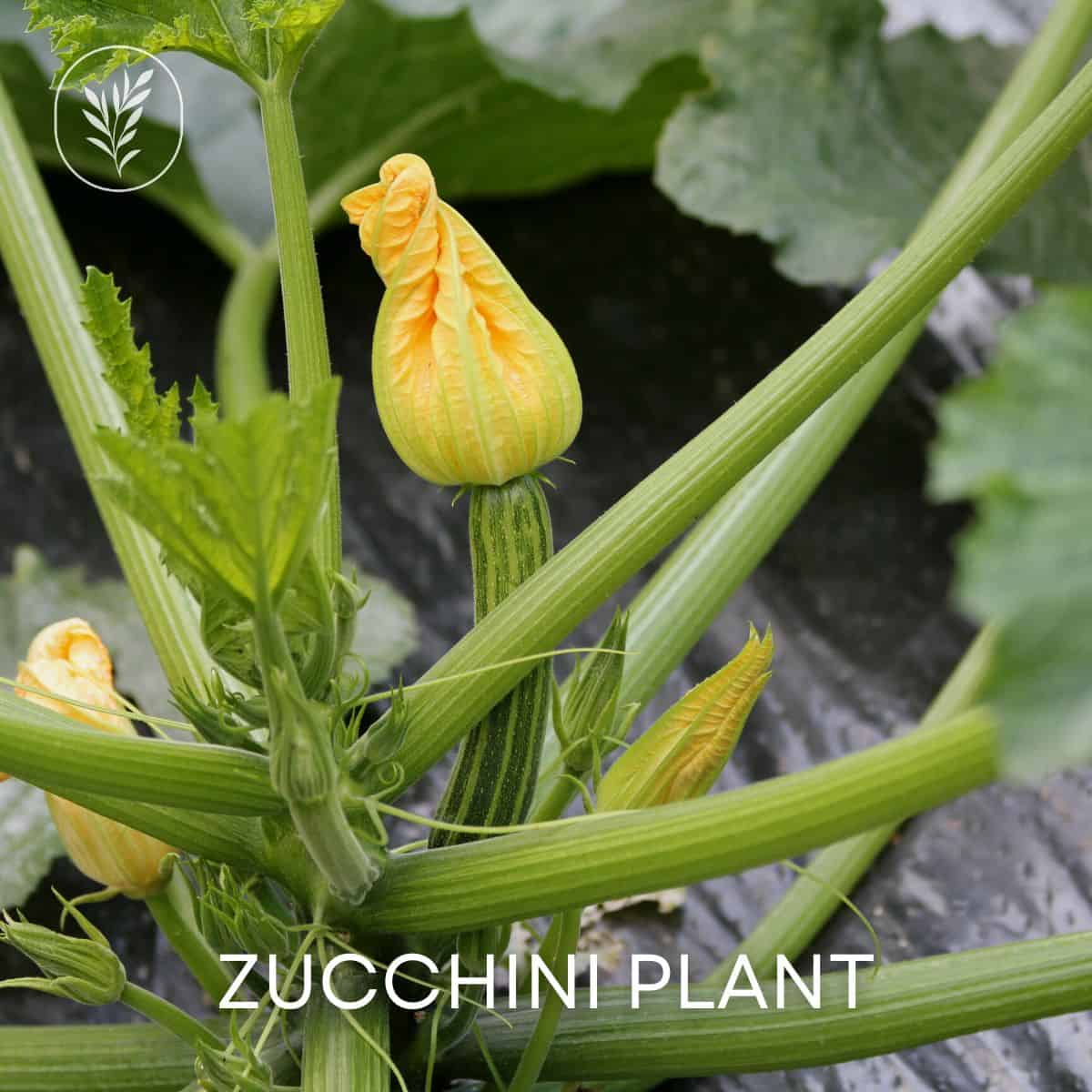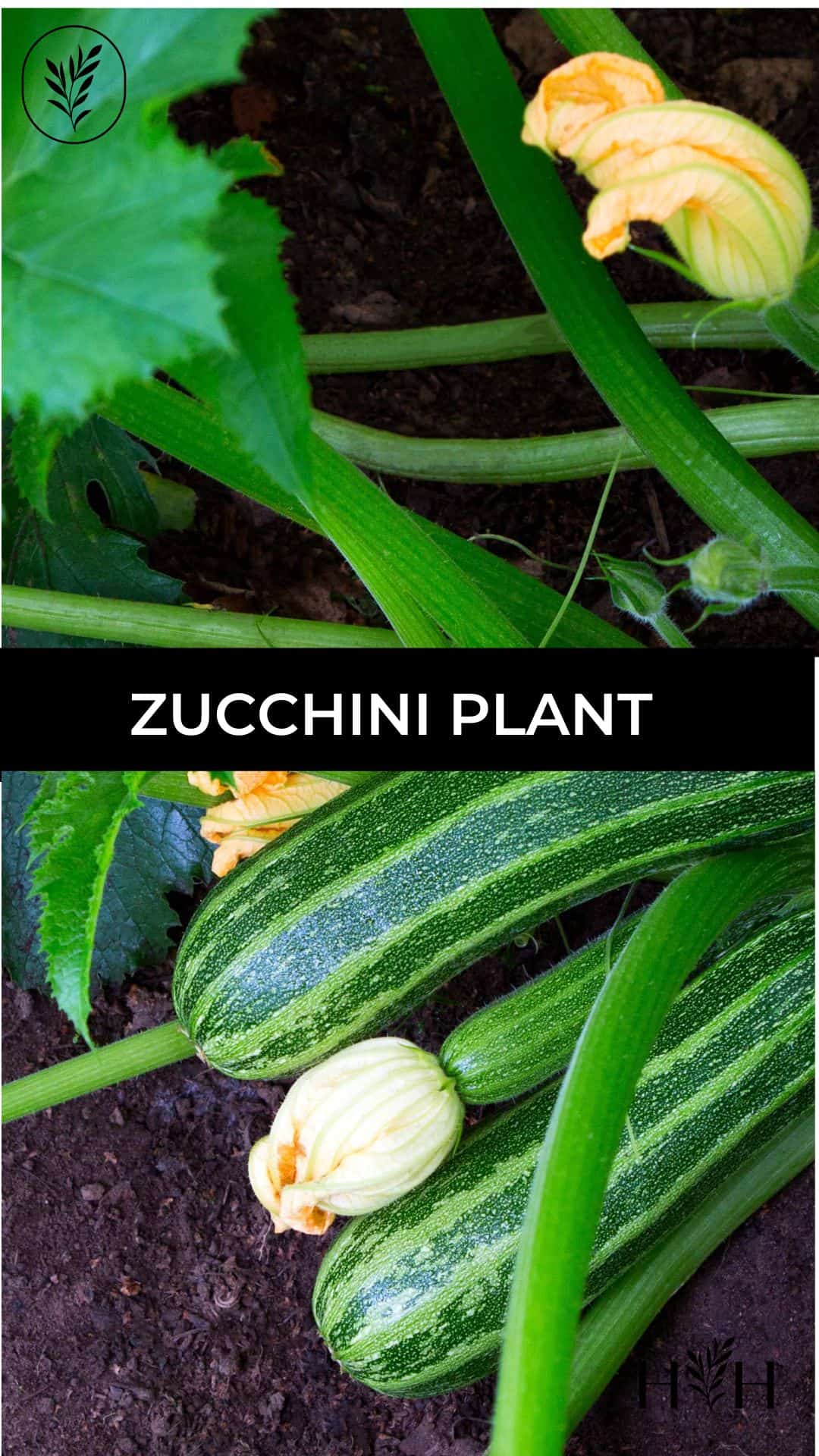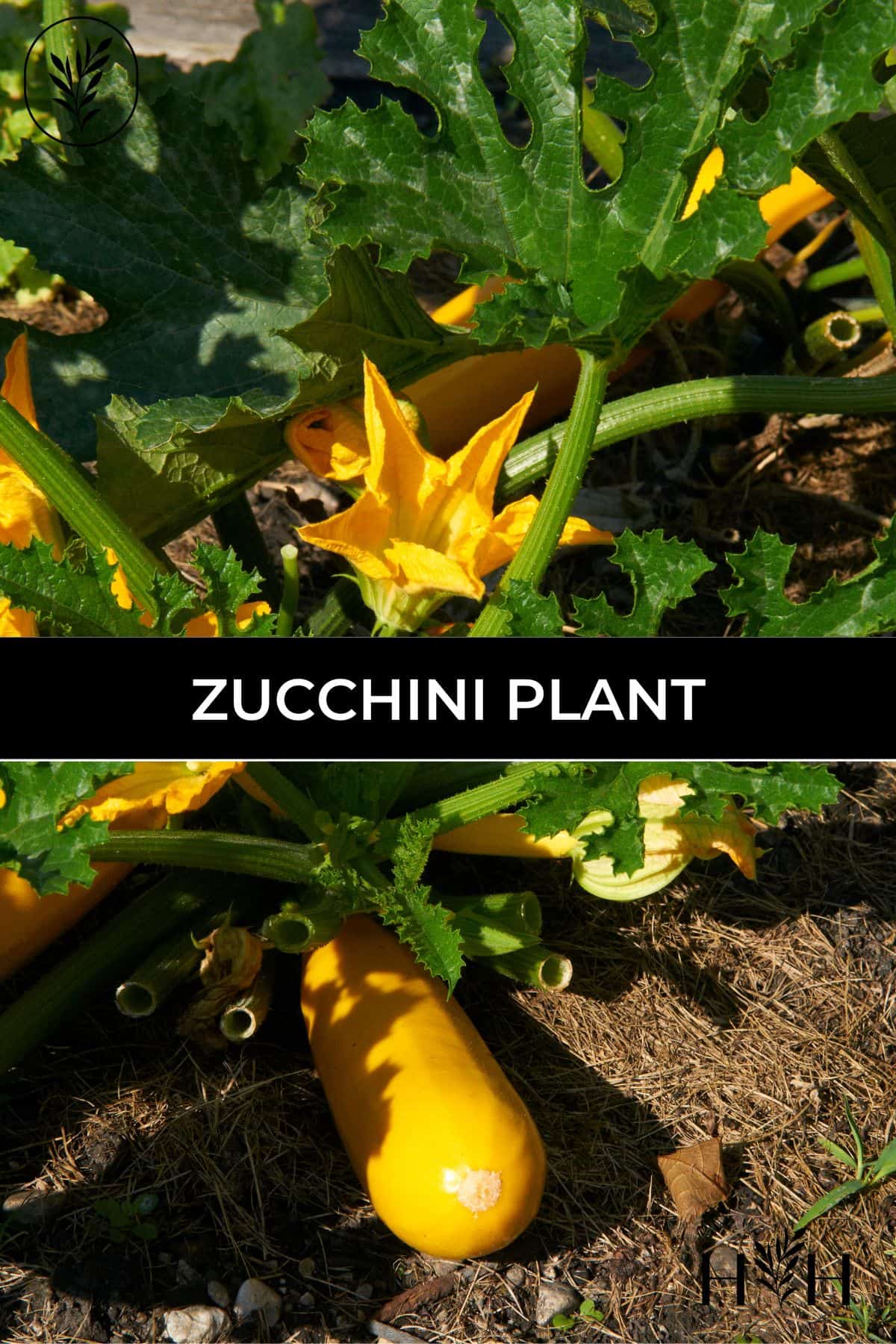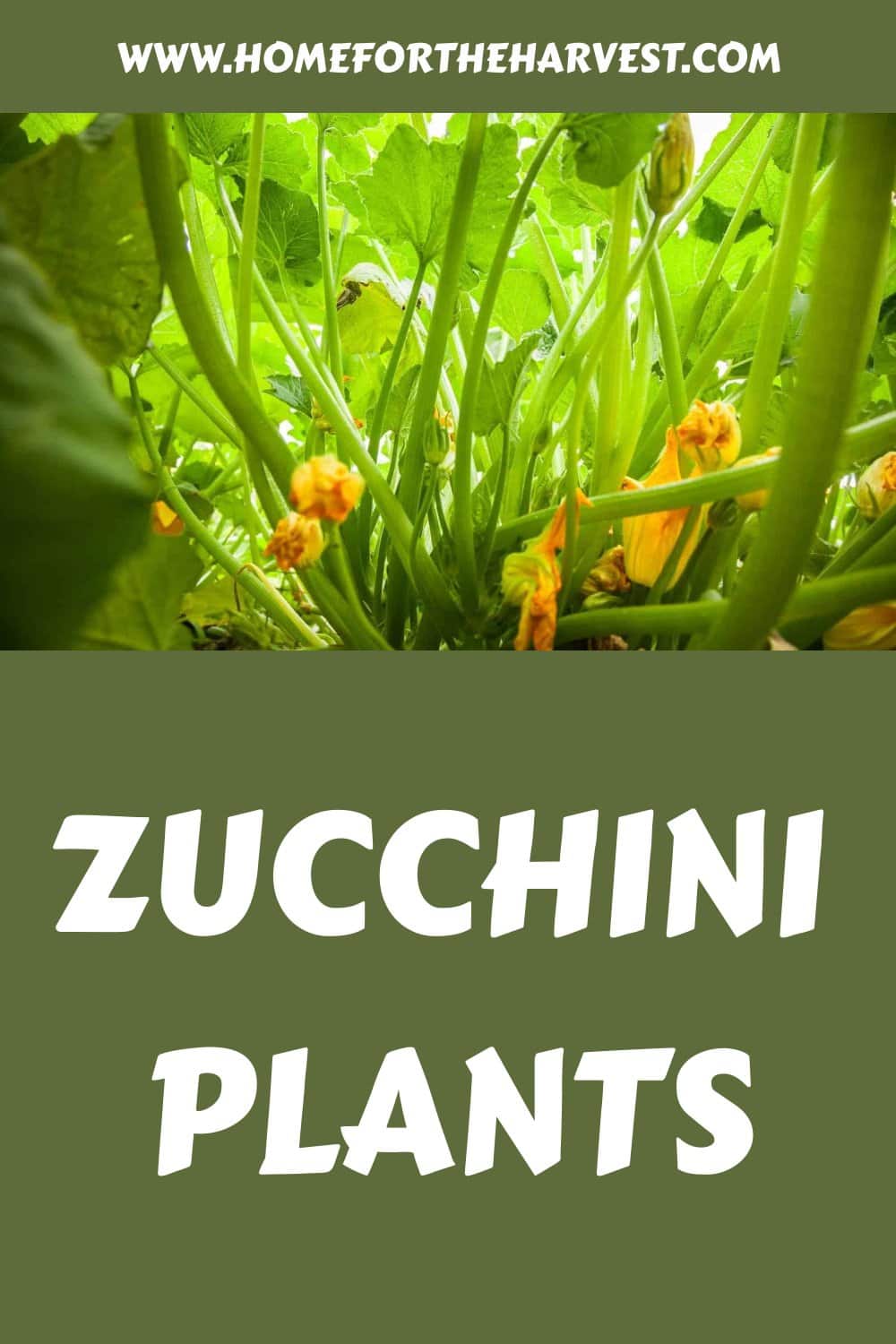Zucchini is a popular plant in the garden as they’re relatively easy to grow and can be eaten fresh or cooked.
Zucchini plants are very easy to grow and produce delicious Italian summer squash. These productive vegetable plants are part of the squash family Cucurbita. Zucchini plants grow best in full-sun locations, and in moist, nutrient-rich soil that allows excess water to drain. They can also be staked and mulched to improve the health of the plant and the yield of zucchinis produced.
Read on to learn all about zucchini plants and how to grow them successfully.
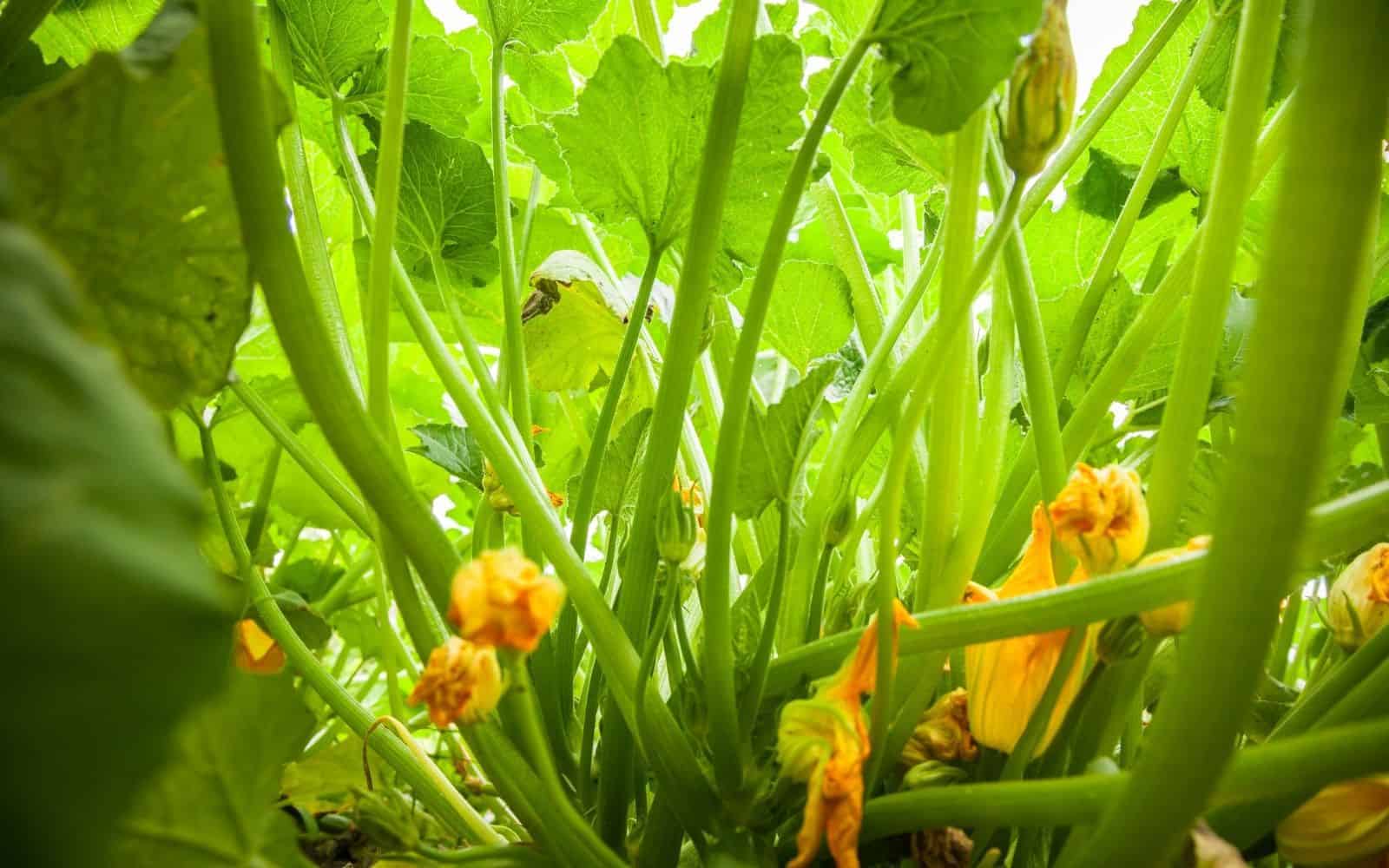
Zucchini plant basics
Zucchini plants are part of the squash family. We cook and enjoy them as summer squash, while the skin is thin and tender. Although squashes as a plant family originate from the Americas, most historic zucchini plants were bred in Italy.
Zucchini are most often green, long, narrow, and ribless. But some varieties can be striped, yellow, round, or ribbed. Most modern zucchini plants have spineless leaves.
An individual zucchini will typically grow to be six to eight inches in length, but they can easily be more than a foot long if left on the vine. Unfortunately, bigger zucchini tend to get tough and fibrous, resulting in poor flavor and bad texture when cooked.
Because of their mild flavor, zucchini does well in many different recipes. Many parents find it easy to slip zucchini into unsuspecting recipes to get their kids to eat healthier/more veggies, like brownies or cakes. Popular zucchini recipes include:
- Baked Zucchini Chips
- Parmesan Zucchini
- Stuffed Zucchini
- Zucchini Bread
- Zucchini Spaghetti
- Meatloaf with Zucchini
Fun Fact: The large golden flowers that grow from zucchini plants are edible!
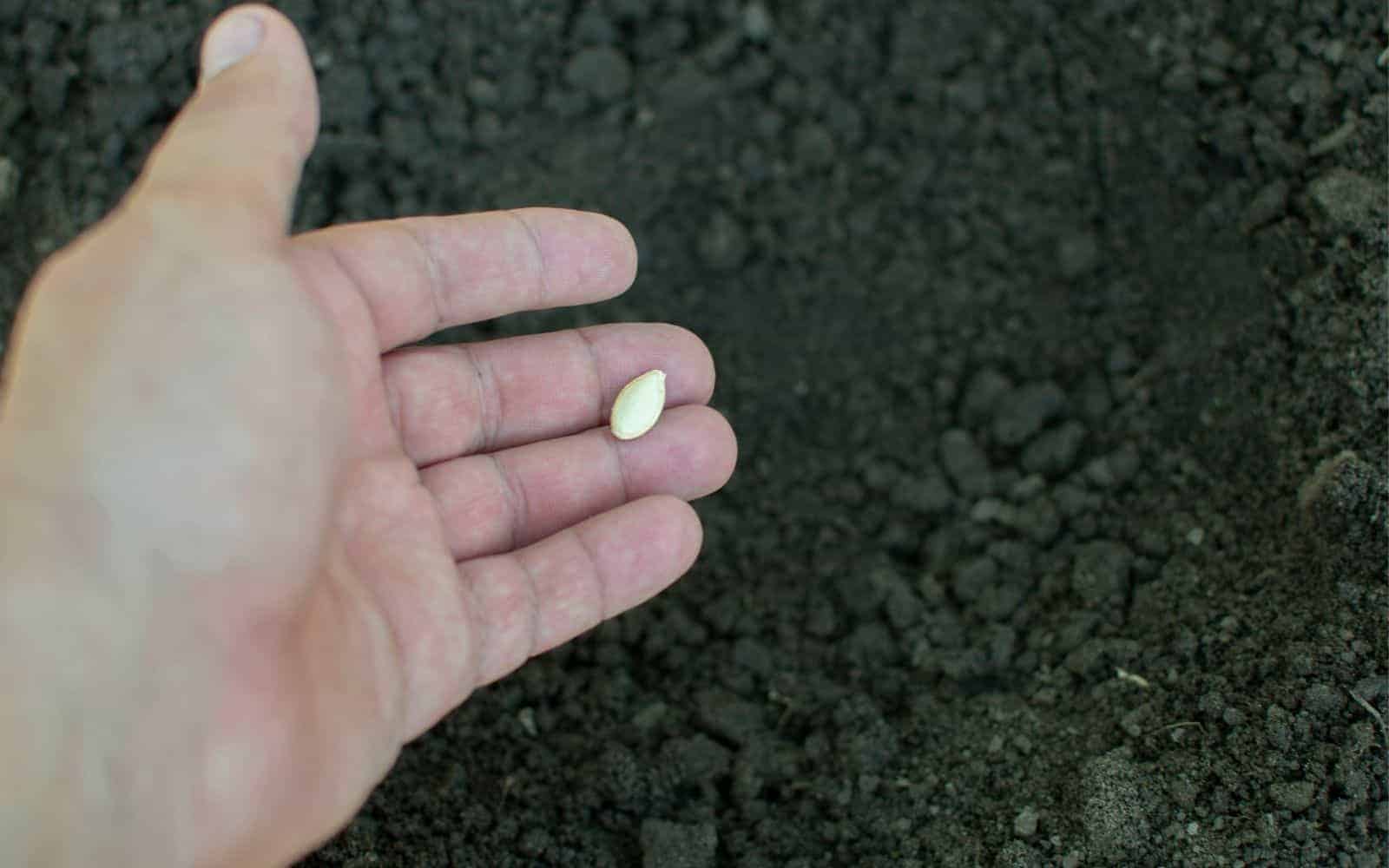
Planting basics
Where to Plant
Zucchini plants need to get at least six to eight hours of full sunlight a day. Plant them in a sunny location with plenty of room for the plant to grow. The variety of zucchini will determine how much space is needed per plant. Multiple plants can be spaced about 1.5 feet apart.
When to Plant
Zucchini plants thrive in warm weather. In naturally warm climates (mostly applicable to Southern states), zucchini plants can be planted in the spring and fall. In more temperate climates, zucchini is planted in May as a summer crop. Regardless of which season you will be planting in (given your location’s climate), zucchini seeds should be planted in soil that is 65 to 70 degrees Fahrenheit.
What Soil to Use
Zucchini doesn’t require extremely nutrient-rich soil, but they do best in soil high in organic matter with a pH level of 6.5. If the current soil you have isn’t optimal for zucchini, some gardeners like to use a soil-building product like Miracle-Gro’s Performance Organics All-Purpose In-Ground Soil to boost their original soil’s texture and nutrition.
Planting Option #1:
If you’re planting zucchinis separately, sow each seed about an inch or inch and a half deep. Plant each seed six inches from the next, in rows that are about two feet apart.
Once they get five inches tall, thin out the weaker plants so instead of each zucchini being six inches apart, they are at least a foot apart. Continue to remove any weak plants as they grow.
Planting Option #2:
Still sow the seeds about an inch or inch and a half deep, but this time, place two seeds in each hole and keep the holes about a foot apart.
As they grow, remove the weaker seedling from each hole and continue to remove weak plants.
Planting Option #3:
Sometimes zucchini are planted as “hills,” where there are four or five seeds sown next to each other on small mounds that are 6 to 12 inches high and 12 to 24 inches wide. Sow the seeds about an inch or inch and a half deep in the soil. Form the mounds five to six feet apart.
Remove the weaker plants on each mound until only two or three strong plants are growing on each hill.
Right After Planting
Regardless of which planting option you use, thoroughly water the seeds directly after planting. Some gardeners add a top layer of organic mulch to help lock in moisture.
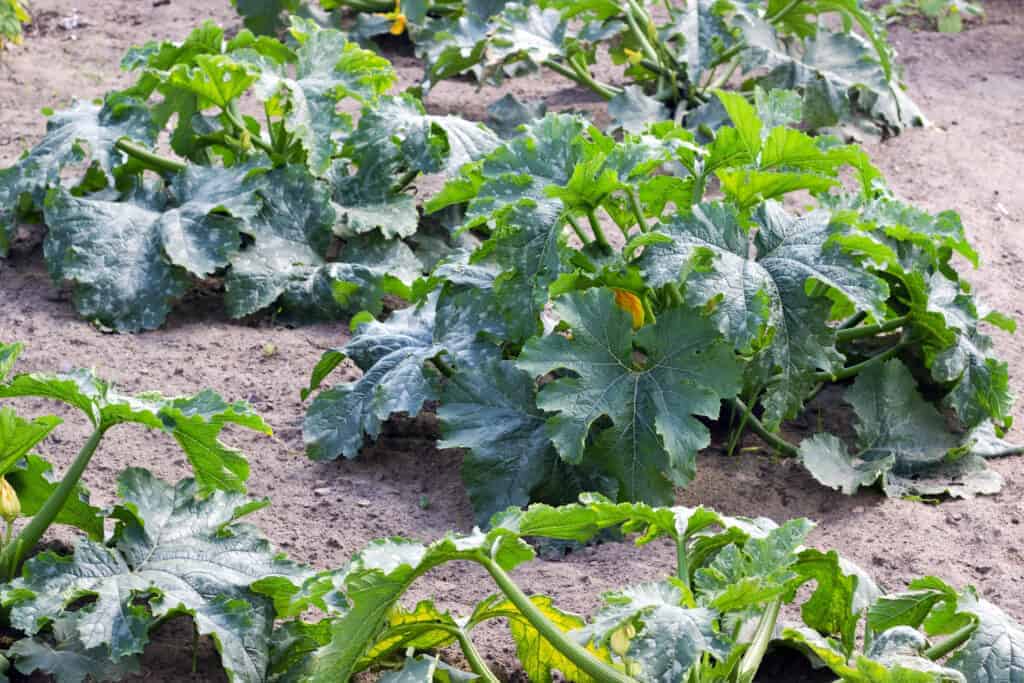
How to care for your zucchini plants?
What to “Feed” Them
In addition to using the right soil, zucchinis can be fertilized a month after planting. Since they do best in soil with plenty of organic matter, you can fertilize with homemade garden compost or well-rotted manure. If you don’t have any compost or manure laying around, there are plenty of good-quality fertilizers that will still provide proper nutrients for your zucchini.
Watering
Besides getting enough sunlight, zucchini plants need to stay in very moist soil. They need to be thoroughly watered at least once a week, making sure that the water is getting at least four inches deep. Anytime you notice that the top inch of soil is dry, water the plant.
When watering, make sure to direct the water to the soil and not the leaves or stem of the plant. Otherwise, the plant has an increased risk of developing rot and other diseases.
As mentioned above, using a top layer of mulch is another way to help keep the soil moist. This is a really good practice for those who find that their soil dries out quickly.
Weeding
It is very important to weed around your zucchini regularly. Ideally, every morning you should check for weeds and remove them as soon as possible to ensure your zucchini plants are getting the most nutrients that they can be. Weeding earlier in the day makes it easier to take out the plants.
Beware of Pests and Diseases
The two most common pests to attack zucchini are squash bugs and squash vine borers.
- Squash bugs feed on the sap in the zucchini vines. This weakens the plant and reduces the health of fruit production. Meaning, there could be less zucchini produced, and/or the zucchini produced is undesirable. Squash bugs are most active early in the summer and will lay eggs on the plants. To protect the zucchini, you can use row covers or fleece before squash bug season comes to lower the chances of squash bugs settling in your garden. If they’ve already come, shake off the adult bugs into the soapy water and scrape off any eggs you find. You should check for adults and eggs at least twice a week throughout the whole season.
- Squash vine borers, like the name suggests, burrow into zucchini stems. This causes the vines to rot and the foliage to wilt. Like the squash bugs, the borers are most active early in the summer. To protect your zucchini, you can use row covers and wrap the stems in foil to prevent eggs from being laid at the base of plants. If you find borers in your vines, you can cut the bugs out by making vertical cuts into the area with a sharp knife. After getting all of the bugs out, bury the stems in fresh, moist soil to encourage new roots to grow.
The two most common diseases are powdery mildew and blossom-end rot.
- Powdery mildew is a fungal disease that forms a white powdery coating on both sides of leaves. In mild cases, the plant can usually cope and will recover. In more severe cases, the disease stalls growth and will hurt your fruit production. To prevent your zucchini from getting powdery mildew, keep your plant well-watered. If there isn’t enough regular water coming, the plant gets stressed and is more likely to catch the infection. Plants all need enough space between each other to get good airflow on the leaves. If your plant gets infected, remove the affected leaves and then mist a 1/3 milk and 2/3 water solution onto all surfaces of the plant. Continue to do this every two weeks until harvest to prevent the mildew from coming back.
- Blossom-end rot, as its name suggests, is when the blossom end of the zucchini turns black and rots. This typically occurs when there are uneven soil moisture levels and irregular calcium levels. If you notice that your zucchini has rot, remove the rotted zucchini(s) immediately. To prevent this from happening again, water the soil deeply and apply a thick layer of mulch to keep the moisture in. Note – small zucchinis can also develop blackened rotted ends due to incomplete pollination.
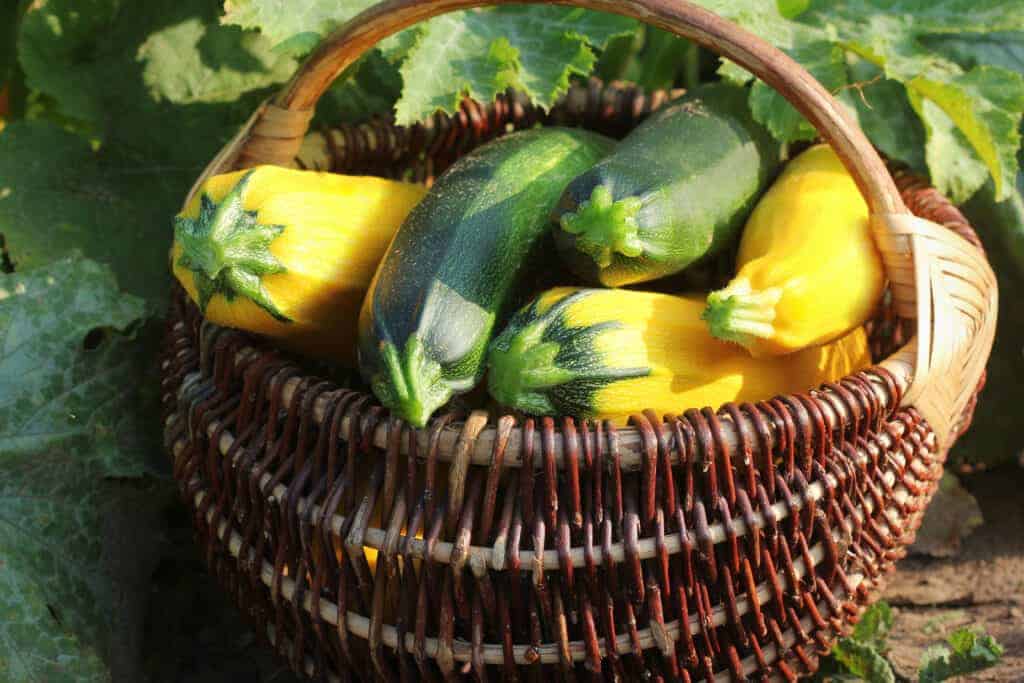
How to harvest zucchini from plants?
There typically isn’t a set time to harvest zucchini, just whenever they are the right size! In general, plants take about 60 days to mature and harvesting can start a week after flowering, but that isn’t always the case. Once the zucchini reaches about six to eight inches long, cut (don’t pull) the zucchini from the stem so that there is about an inch of the stem still attached to the zucchini. You can store zucchini in the fridge for about a week.
Once you start harvesting, you need to check your zucchini plants most days for more zucchini to pick. The more frequently you pick, the more the plant will produce. As soon as you find an overripe zucchini, remove it from the plant whether it is mushy or not. You don’t want any zucchini staying for too long because it will get too tough to enjoy and it will steal nutrients from the smaller zucchini on the plant.
Overripe zucchini may not be tender for eating, but they are great for seed saving! Let the zucchini sit for an extra week or two before slicing lengthwise and scooping out the seeds. Zucchini plants are prone to cross-pollination, and may not necessarily grow new plants that are the same as the parent plants. Here’s an in-depth article about how to save zucchini seeds.
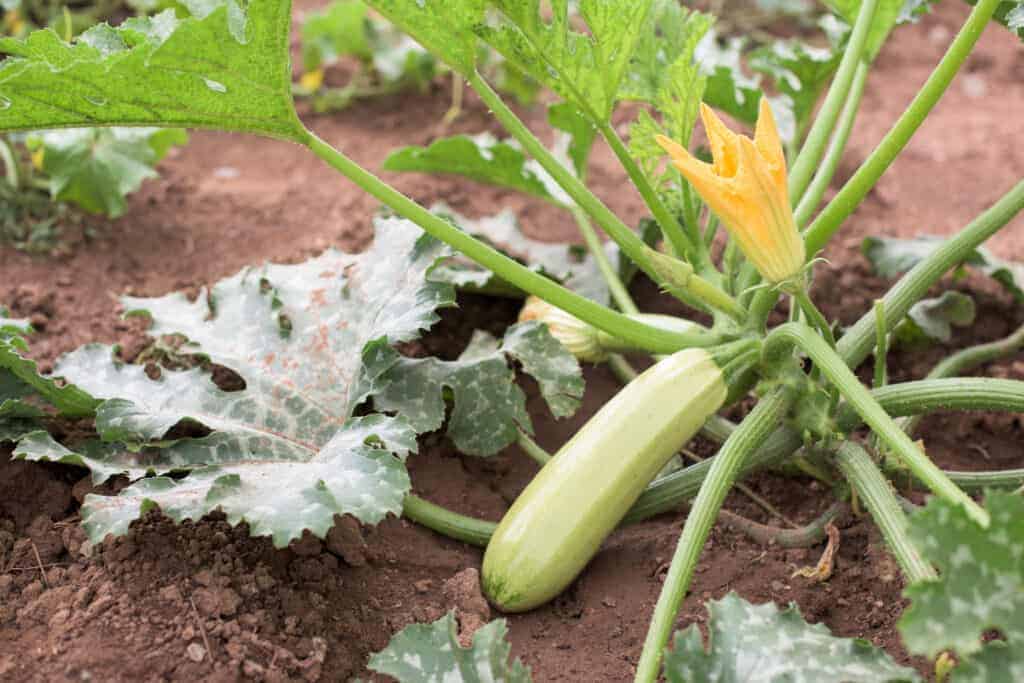
Common zucchini plant growing problems
Why Won’t My Zucchini Bloom?
If the plant isn’t getting enough light or the soil is soggy, your plant may not bloom. Zucchini need lots of light and moist soil. Too wet or too dry soil will cause complications in fruit production.
In most cases, you will have to wait and try again next year to solve the problem.
I Have Flowers, But No Zucchini
Fruit production is a result of pollinated flowers. Zucchini plants produce both male and female flowers. The male flowers can pollinate the female flowers, or male flowers from other squashes can pollinate them. Typically this is done by bees and can take multiple bee visits per flower. If there aren’t enough bees visiting your female flowers, you will not produce zucchini.
To fix this, you can pollinate the flowers yourself! This does require a bit of diligence because both male and female flowers only last for a day and can close up quickly if it’s too hot out. Ideally, to pollinate your zucchini you would go out in the morning and pick a male flower off the plant, remove the petals, and brush the remaining stamen all over the center of the female flower. If the female flower is coated with pollen, then that was enough to get the job done!
To tell male and female flowers apart, the female flower will have a little ovary at the base in the shape of a mini zucchini. The male flowers will have normal stems.
My Zucchinis Fall Off Before Harvest
If your zucchinis are falling off the vine before they are ready, the plant is most likely aborting them because of incomplete pollination. To prevent this from becoming a regular problem, you can try pollinating the flowers yourself (as described in the section above).
